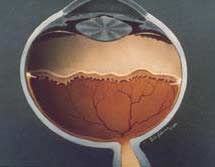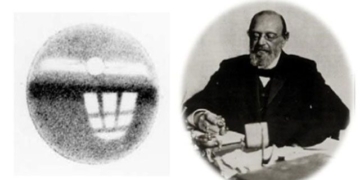Retinopathy of Prematurity (ROP) is an eye disease caused by abnormal retinal blood vessel development in premature or low-birth-weight infants. If not detected and treated promptly, there is a risk of permanent blindness in both eyes.
Which Children Need Eye Exams to Detect the Disease?
1.
 |
| Retinopathy of Prematurity is an eye disease caused by abnormal retinal blood vessel development in premature or low-birth-weight infants. (Image: bouldereyesurgeons) |
Infants with a birth weight of less than 1,500g or a gestational age of less than 33 weeks (7.5 months).
2. Infants with a birth weight between 1,500g and 2,000g who experienced asphyxia at birth, required incubator care, needed prolonged oxygen therapy, have other accompanying illnesses, and whose pediatrician recommends an eye exam.
3. Infants with a birth weight between 1,500g and 2,000g who are part of a multiple birth (twins, triplets, etc.).
In general, the lower the birth weight or the smaller the gestational age, the higher the risk of developing ROP.
Disease Progression
Preterm infants may initially show no signs of ROP, only having immature retinal blood vessels that do not sufficiently nourish the retina. ROP may develop some time after birth if the retinal blood vessels grow abnormally, meaning not all premature infants will develop ROP. When ROP occurs, three scenarios may happen:
Mild cases may resolve on their own without treatment.
Moderate cases may partially resolve without treatment but require long-term monitoring to prevent late complications.
Severe cases require timely treatment; otherwise, most will lead to permanent blindness.
Methods of Detection
In the early stages, ROP cannot be detected visually (the eyes may appear normal). By the time it shows external symptoms, the disease is already in an advanced stage and no longer treatable. ROP screening should be performed approximately four weeks after birth. An ophthalmologist will use a special device with a converging lens called an indirect ophthalmoscope to assess and monitor the infant.
Treatment Methods and Effectiveness
There are two treatment methods: cryotherapy and laser photocoagulation. The physician will choose the appropriate method for the child.
Depending on the severity of the disease, if it is mild or moderate and detected early, the outcomes are quite good. However, in severe cases, regardless of the treatment method used, the risk of blindness remains very high. If detected late and the disease has progressed to retinal detachment, the child will experience permanent blindness. Future visual function also depends on various factors during the child’s development.
Follow-Up and Monitoring
For the safety of the child’s eyes, follow-up appointments as scheduled by the doctor are crucial and should not be overlooked. Depending on the condition, the doctor may schedule follow-ups in a few days, one week, or two weeks, or may require immediate treatment. Children need to be examined until they have passed the critical stage or until the retinal blood vessels have fully developed.
When a child has ROP, even if it is a mild case that does not require treatment, some late complications may still occur, such as strabismus, myopia, glaucoma, or delayed retinal detachment. Therefore, long-term monitoring at a pediatric ophthalmology clinic is necessary to detect and intervene timely. Special attention should be paid to cases where the disease affects one eye more than the other.
Preparation Before the Eye Exam
Pre-register before the exam date: Before the examination, the child will need to have dilating eye drops, so it is essential to arrive at the clinic to make an appointment in advance (the child does not need to be brought along when registering) and to bring the child at the scheduled date and time.
Do not feed the child for at least one hour before the exam: During the examination, the child may cry, and to prevent the risk of choking on milk (which can be fatal), the child should not be fed from the time the dilating drops are administered.
Bring all necessary documents (discharge papers, referral letters for the eye exam, mother’s prenatal check-up papers, ultrasound results, follow-up appointment papers, etc.) as details related to pregnancy duration and birth time are very important.
Where to Contact for an Eye Exam?
It is best for the child to be referred for an eye exam by a pediatrician with all relevant details regarding the mother’s pregnancy and the child’s birth.
Additionally, you can contact the following places for guidance on scheduling an eye exam for the child: Ho Chi Minh City Eye Hospital, Eye Clinic (280 Dien Bien Phu, District 3, Ho Chi Minh City), or Children’s Hospital No. 1, Tu Du Obstetrics Hospital, Kangaroo Room, Neonatal Department.
Dr. PHAN HONG MAI (Ho Chi Minh City Eye Hospital)


















































